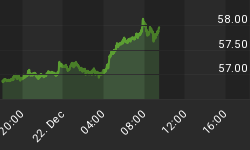Charles Goyette is a veteran radio guy, a libertarian who supported Ron Paul before it was fashionable. Now he's written his first book, The Dollar Meltdown, and from beginning to end it's a pleasant surprise. Goyette writes as smoothly as he speaks and his perspective is unapologetically libertarian. So he gets it right on both content and delivery.
As you'd expect with a talk show host, he's comfortable with polemics:
America's national government has moved way beyond a political spoils system. A spoils system leaves the host alive so that a politician's occasional ne'er-do-well brother-in-law can be put on the payroll. America has become a piñata: everybody gets a crack at it. Presidents and other elected officials pass the big stick around as a reward to those who help keep them in charge of the piñata party. The American media plays the role of the party's mariachi bank, keeping festive spirits high. And the people in their demographic and interest groups all line up to take a whack at the goodies. America has become a piñata.
But he also does a good job of laying out the substantive argument for a currency crisis. Readers, for instance, find out that with the explosion of government borrowing and unfunded liabilities, U.S. debt now totals $1.3 million per family of four. And that the Fed is in reality a cabal of global banks that tricked the U.S. into giving it control of the money supply back in 1913. The chapters covering the history and function of money introduce concepts like fractional reserve banking and recount some of the past episodes of hyperinflation. And the quotes Goyette uses to illustrate his points are well-chosen, ranging from Austrian economists to Fed governors. This one from Ludwig von Mises introduces the "crack-up boom":
They become suddenly aware of the fact that inflation is a deliberate policy and will go on endlessly. A breakdown occurs. The crack-up boom appears. Everybody is anxious to swap his money against "real" goods, no matter whether he needs them or not, no matter how much money he has to pay for them. Within a very short time, within a few weeks or even days, the things which were used as money are no longer used as media of exchange. They become scrap paper. Nobody wants to give away anything against them.
That, says Goyette, is the dollar's future. And with monetary chaos will come authoritarian government. He devotes a chapter to speculation about the forms of coercion to which Americans will be subjected in coming years, which is effective both because of its clarity and because it shows how similar things have already happened and/or are being considered today. Here's a sample:
SPECULATION: In a monetary breakdown the government may try to stop you from moving your money out of the country or investing it abroad.
Reality: In 1968 President Johnson implemented mandatory controls on foreign investments and on loans made abroad. The headline in the New York Times on January 2, 1968, read, "Johnson Acts on Dollar: Curbs investing Abroad and Asks Cuts in Tourism."
SPECULATION: In a monetary breakdown the government may confiscate pension plans and retirement accounts. It may institute forced savings schemes or other appropriations. It may insist that safety deposit boxes be opened in the presence of an examiner.
Reality: In October 2008 the U.S. House Education and Labor Committee heard testimony from an economist proposing replacing 401(K)s and IRAs with government retirement accounts.
The last few chapters cover the familiar but essential waterfront of investments that should do well in a currency meltdown: gold, silver, oil and other commodities, along with next-generation digital gold currencies like GoldMoney.
And of course Goyette's timing is pretty good. With gold soaring and the dollar falling, this will be the introductory text for a lot of suddenly-interested readers. A case of a book matching its times perfectly.















